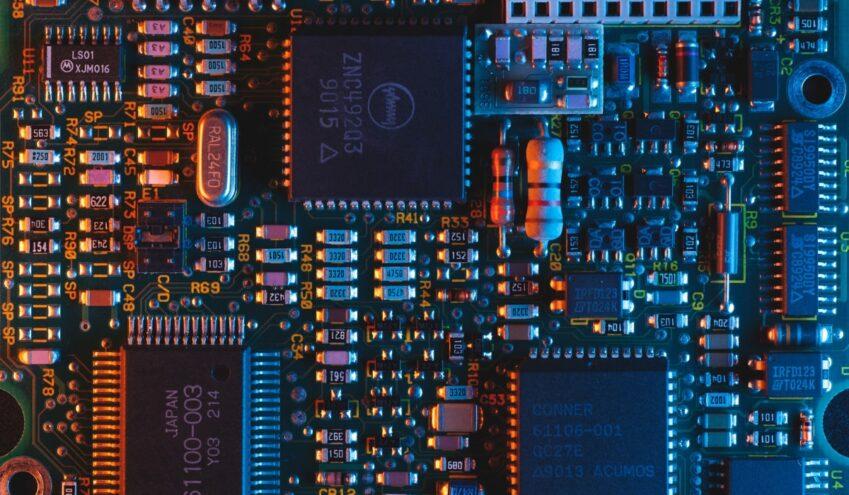
Yocto Build System

The Yocto Project is an open-source framework that helps developers to build systems for Linux-based embedded products. Yocto provides a set of tools and an environment where developers exchange technologies and software stacks for usage in embedded devices. To further enhance this process and tackle complex challenges, an embedded software engineering service can offer specialized expertise and tailored solutions in the realm of embedded systems.
The framework provides support for hardware and software stacks as well as the configurations exchange and software assemblies. Embedded Linux development with Yocto Project also helps you to create customizations for multiple hardware platforms and software stacks with the ability to maintain and scale them.
There are three key development elements in the Yocto Project:
- a set of tools for working with Linux, in particular, automated build, testing, and board support processes;
- built-in Poky distribution;
- Open embedded building system.
Let’s discuss the main features of Yocto Project development in detail (and we will also share a great Yocto tutorial from YouTube).
MODULAR APPROACH
The Yocto Project provides an ability to split large software modules into software, distribution, and BSP (Board Support Package) layers. Typically, hardware manufacturers provide a BSP layer with kernel configuration and drivers for their products.
Embedded systems engineers add a custom layer, then add or remove components to match the final product. User-level software is stored in one or more separate levels. If developers separate the layers in Yocto project development environment correctly, then they can be turned on and off depending on the equipment, versions, and the customer’s wishes. This modularity of the kernel and Linux allows the product to be maintained throughout its entire lifecycle.
The embedded Linux development with Yocto Project helps you to install, configure, and build software that is used in an embedded product, such as the kernel, driver modules, root filesystem, etc. Yocto uses recipes to describe how to perform these steps. Recipes can be taken from other layers or added separately.
Note that layers in the Yocto project development environment can contain configurations for multiple hardware platforms, which are categorized into “machines”. And machine configurations are part of the BSP layer, depending on the board. Typically Linux kernel configuration, boot options, and device trees are tweaked to match the board.
LICENSE TRACKING
Developers often face license tracking issues when working with open-source software during the embedded Linux development with Yocto Project. For instance, the wrong license can lead to problems and costly downtime. If a Linux Yocto recipe uses open source in closed software, this can lead to a failed build process, so Yocto must specify which license the software should use. Thus, the Yocto project development environment keeps track of all licenses throughout the entire product lifecycle.
COMPARISON OF YOCTO AND BUILDROOT
Sirin Software experts compared Yocto and Buildroot.
As we mentioned above, Yocto Project development helps to create systems for Linux-based IoT products, regardless of the hardware architecture.
Buildroot simplifies and automates the process of building a complete Linux system for embedded products using cross-compilation.
Both tools belong to the category of the technical Linux projects Yocto stack, named “Building Infrastructure”.
Here are some features that the Yocto Project development offers:
- open-source embedded Linux Yocto build system;
- package metadata;
- SDK generator.
As far as Buildroot is concerned, this tool offers the following key features:
- embedded Linux;
- cross-compilation;
- built-in system.
However, since it was discovered that Yocto greatly facilitates the development process of embedded Linux systems, this tool has become the main choice for creating your own Linux Yocto systems.
Considering all the Yocto Project advantages, it has enlisted eminent organizations with Intel, Dell, LSI, etc. support.
PROS & CONS
Finally, let’s take a look at the Yocto Project pros and cons identified by the Sirin Software team.
Yocto benefits
- the ability to support multiple architectures/toolkits in one repository/build tree;
- layers introduction to increase flexibility;
- the modular architecture of Yocto-based products with easy customization;
- availability and flexibility;
- streamlined release and update process;
- community support;
- access to a wide range of tools and SDKs;
- facilitates the Linux porting process.
Yocto disadvantages
- when problems in Yocto-based products arise, you have to make an effort to find out exactly what the problem is;
- it takes a lot of time to set it up correctly;
- layers, recipes, and all other terminology can be confusing at first.
CONCLUSION
The Yocto Project simplifies the process of building Linux embedded systems and provides a community where developers can exchange technologies and software stacks. In line with these advancements, internet of things development services play a crucial role in harnessing the power of the Yocto Project to create sophisticated IoT solutions.
If you are interested in developing embedded products using the Yocto Project, contact us at Sirin Software.



